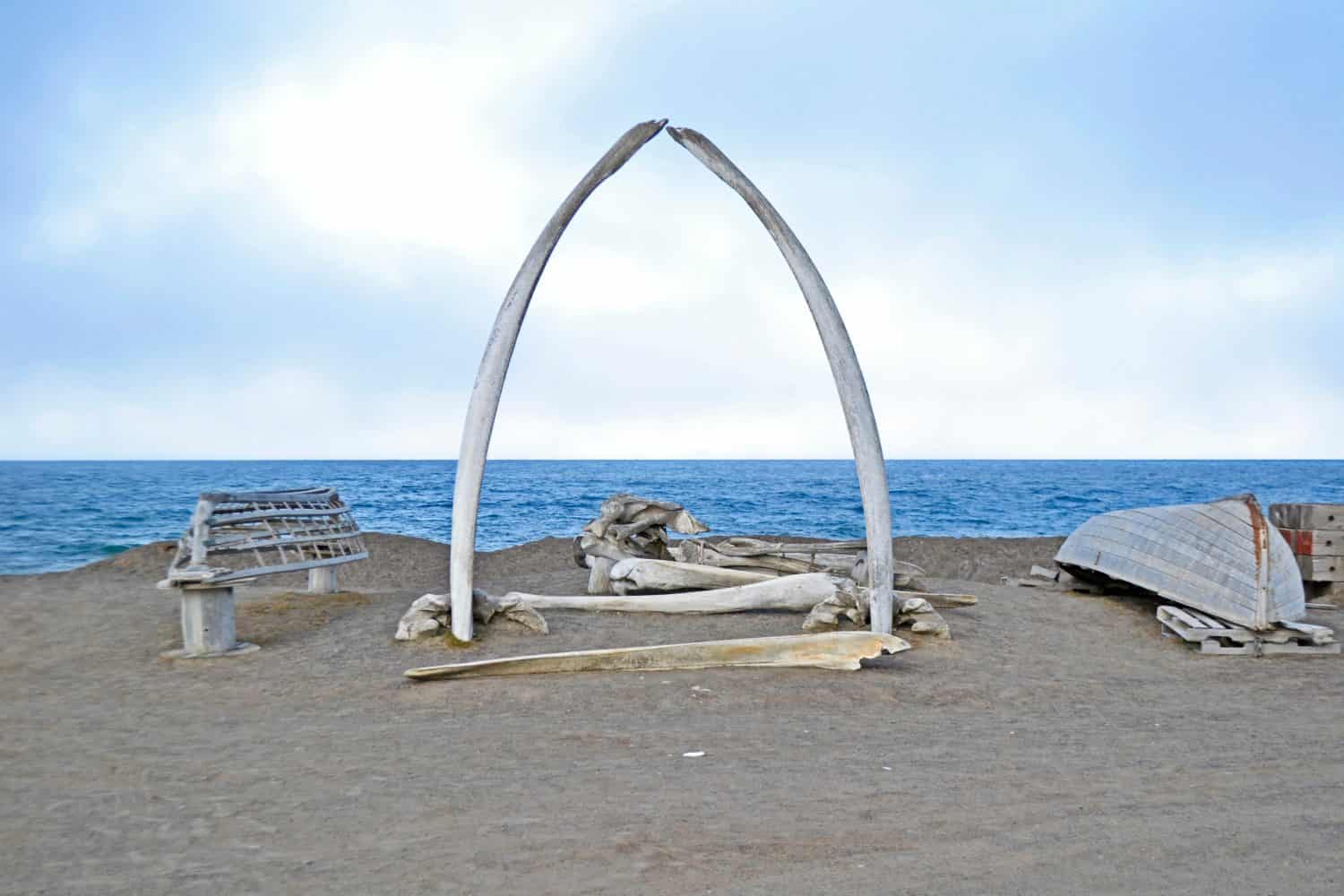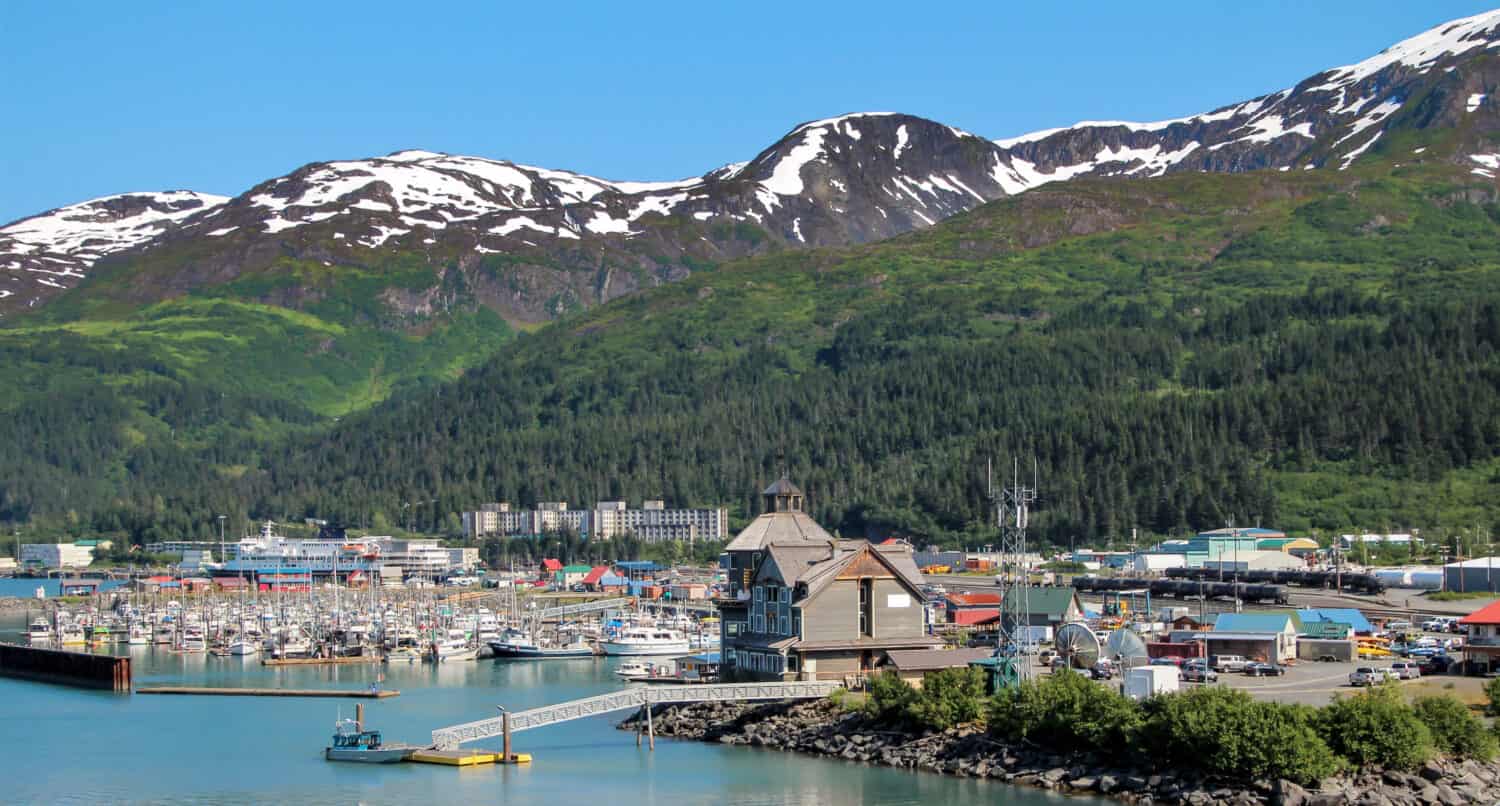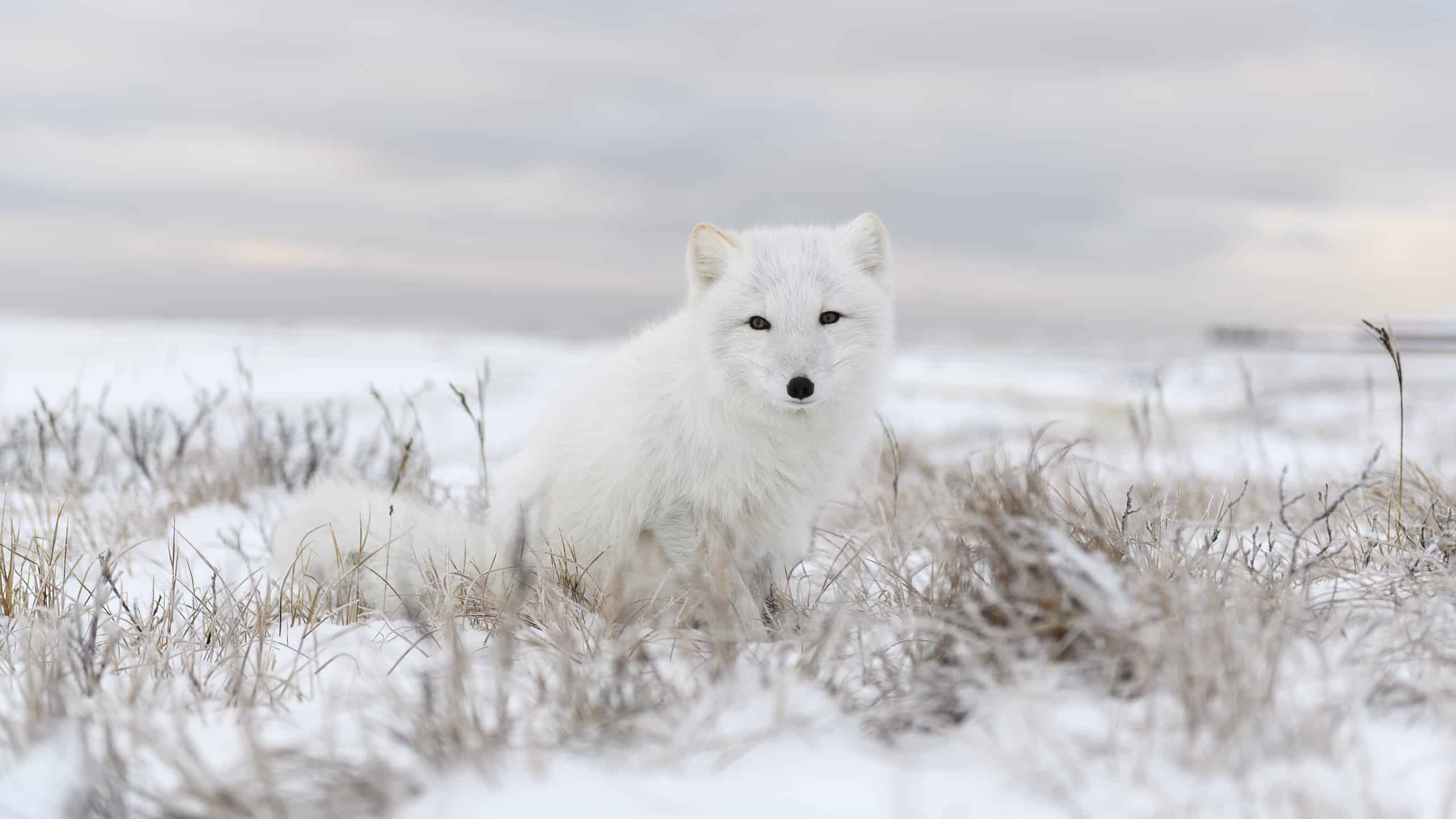Alaska itself is a remote spot, situated more than 2,000 miles away from the nearest continental state, Washington. The enormous state features quite a few remote locations, some of which are uninhabited. Though they might be remote, these four spots in Alaska offer incredible opportunities to view wildlife and enjoy nature.
1. Utqiagvik

A whalebone arch in Utqiagvik, AK, lies at the edge of the Arctic Ocean. Referred to as the “Gateway to the Arctic,” it symbolizes the community’s relationship to the sea and whaling.
©JKBay/Shutterstock.com
Utquiagvi, formerly known as Barrow, is the northernmost settlement in North America. Native Alaskans make up over half the population of Utqiagvik. Iñupiaq is commonly spoken in the area, though many younger Native Alaskans also speak English.
Utqiagvik was originally incorporated as a city under the name Barrow in 1958. In 2016 village residents voted to change the city’s title back to its traditional Iñupiaq name, writes Travel Alaska. “Utqiagvik” literally translates to “the place where we hunt snowy owls” in the Iñupiaq language.
Utqiagvik is one of the oldest inhabited town sites in the United States, with human habitation likely dating as far back as 800 AD. Hunting and gathering remain an important part of life in Utqiagvik. The city is located within a tundra climate and has a population of just under 5,000 people, as of the 2020 census.
Wildlife
As the translation of its name suggests, snowy owls make their home around Utqiagvik. These beautiful birds of prey heavily rely on the area’s lemming population for food. Arctic foxes, gulls, jaegers, and weasels also live around the town.
Utqiagvik provides an incredible spot for wildlife viewing. In the spring, millions of migratory birds travel through the area. Throughout different times of the year, nature enthusiasts may spot bowhead and beluga whales, ringed and bearded seals, walruses, caribou, polar bears, and more.
How to Get There
Utqiagvik is not accessible by road. It can only be reached by plane. Alaska Airlines and other carriers will get visitors to this destination via flights from Anchorage and Fairbanks.
2. Whittier

The small town of Whittier isn’t too far from Anchorage, but it feels a world away from the rest of the state.
©SJ Brown/Shutterstock.com
Whittier is a tiny town located at the head of the Passage Canal, on the far side of the Prince William Sound. It lies southeast of Anchorage and has a population of only 272 people as of the 2020 census. Whittier also offers a unique feature to its residents.
A large number of Whittier locals make their home in the 14-story Begich Towers Incorporated (BTI), writes lovePROPERTY. The building also houses a local hospital, school, police station, grocery store, church, post office, and city council headquarters. Due to this, Whittier has earned the nickname “the town under one roof.”
Whittier has a subarctic climate and wind, rain, and snowfall are common. In fact, Whittier is known as the wettest city in Alaska. With cold, precipitation, and winds raging up to 80 miles per hour, it’s a good thing that most residents of Whittier have everything they need in one building.
Wildlife
Whittier is a fantastic location for wildlife viewing. According to the Alaska Department of Fish and Game, what at first glance seems like a jumble of sticks in the trees may actually be a bald eagle nest. Five species of Pacific salmon make their home in Alaskan waters, and mountain goats thrive in the hillsides near Portage Pass Trail.
Keep an eye out for marine mammals such as harbor porpoises and killer and humpback whales around Passage Canal, where depths dive dramatically from 35 feet to 600 feet. Whittier is also bear country, so it’s important to travel safely and know how to avoid dangerous encounters with bears.
How to Get There
Though Whittier is located just 60 miles southeast of Anchorage, it feels quite cut off from the rest of the state. Whittier can only be reached by a single-lane tunnel through the mountains.
Residents of Whittier must schedule their lives around the tunnel’s timetable, which cars can only pass through once an hour in either direction. The tunnel closes at 10:30 p.m., giving Whittier residents and visitors an early curfew.
3. Golovin

Chinook salmon make their home in the streams and lakes along the Seaward Peninsula.
©Evan Linnell/Shutterstock.com
Located on the Seaward Peninsula, Golovin is a small town of around 150 residents, according to the Westmark Hotels Blog. The city’s population is made up of over 80% Native American people. In fact, Golovin was originally the Eskimo (Inupiat) village of Chinik.
Today residents of Golovin follow a fishing, herding, and subsistence lifestyle and many residents use primarily herbal medicines. The sale or importation of alcohol is also banned on the island. Winter temperatures can reach extremes as low as -40°F.
Wildlife
A large number of wildlife can be found in Golovin and its surrounding area. Streams and lakes along the Seaward Peninsula provide a habitat for all five species of Pacific salmon, reports the National Oceanic and Atmospheric Association. Moose, brown bears, and gray wolves also roam the area.
The gray wolves feed on Golovin’s prey species, such as voles, lemmings, ground squirrels, snowshoe hares, and beavers. Migratory birds also occupy a variety of habitats throughout the Seaward Peninsula.
How to Get There
The only way to get to Golovin is via the Golovin Airport or the Iditarod Trail from the west or east. The carrier Bering Air operates daily passenger and cargo flights to the village.
4. St. Matthew Island

Arctic foxes are one of the few mammals that make their home on St. Matthew Island.
©iStock.com/Alexey_Seafarer
St. Matthew Island is the most remote spot in Alaska. It is an uninhabited island in the Bering Sea. St. Matthew Island lies almost 300 kilometers — a 24-hour ship ride — from the nearest human settlements, according to Hakai Magazine.
Nunivak Island is the nearest inhabited settlement to St. Matthew Island. However, even Nunivak itself is quite remote. The only permanent settlement in the area, known as Mekoryuk, has a population of around 200 residents.
According to the National Climate Data Center, the climate of St. Matthew Island is maritime with “considerable wind and cool, humid and cloudy conditions.” The average annual temperature is only around 37.8 °F (3.2 °C).
Wildlife
Wildlife on St. Matthew Island is limited thanks to its remote nature. Only two species of mammals live on the island — Arctic foxes and insular voles. Arctic foxes are well adapted to living in cold environments. Fascinatingly, insular voles can only be found on St. Matthew Island and the neighboring Hall Island.
While most mammals cannot thrive on St. Matthew Island, birds tend to fare quite well. In fact, the island provides a breeding habitat for over 140 species of birds, according to the United States Geological Survey.
Even nests from rarer birds such as the Pribilof Rock Sandpiper and McKay’s Bunting, which can be difficult to find, have been observed on the island.
How to Get There
St. Matthew Island receives occasional visitors in the form of tourists or researchers, but a journey to the island should not be taken lightly.
In 2012 writer Ned Rozell reported plans to visit the island with a group of researchers in an article from the Geophysical Institute at the University of Fairbanks Alaska. One of these scientists, Dave Klein, had made five previous visits to St. Matthew Island.
The team’s journey to the island involved captains with the Alaska Maritime National Wildlife Refuge ferrying them on the refuge’s ship, the Tiglax, to St. Matthew from the island of St. Paul, about 225 miles and 24 hours away. For tourists, the best way to reach the island is likely via a group expedition, such as the one offered by Hurtigruten.
Summary of the 4 Most Remote Spots in Alaska
| Location | Coordinates |
|---|---|
| Utqiagvik | 71.2906° N, 156.7886° W |
| Whittier | 60.7746° N, 148.6858° W |
| Golovin | 64.5451° N, 163.0363° W |
| St. Matthew Island | 60.4196° N, 172.7448° W |
The photo featured at the top of this post is © iStock.com/Wirestock
Thank you for reading! Have some feedback for us? Contact the AZ Animals editorial team.







